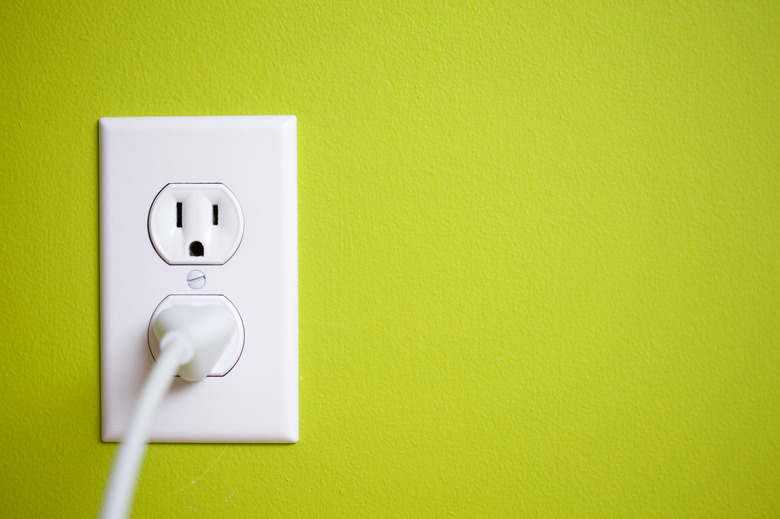How To Wire Electrical Outlets In Series
A common misconception when doing receptacle wiring is that, when you daisy-chain them in a circuit, you're wiring them in series. You're actually wiring them in parallel, and that's a whole different thing. Each device in a parallel circuit receives electricity independently of the others, so if one of them fails, the others stay on. Compare that to a cheap string of Christmas lights, which are usually wired in series. One bulb burns out and the whole string goes off. Virtually all devices in residential circuits — except for switches — are wired in parallel.
It would be against code to wire receptacles in series, and there's no good reason to do it anyway. The total voltage in a series circuit equals the sum of the voltage drops, which means if you have something plugged into each of the receptacles, the voltage of the series outlet at the end would be too low to do anything useful. In a parallel circuit, the voltage across each component is the same. It's possible to overload a parallel circuit, but if you do, all the devices experience the same voltage drop. Before the drop becomes significant, the circuit breaker trips because of the large current draw.
How to Wire an Outlet
How to Wire an Outlet
A standard electrical outlet has two brass terminal screws, two chrome ones and a single ground terminal, which is green. When you wire a single outlet to a live circuit cable:
- Connect the black wire to one of the brass screws – usually the top one, but it doesn't matter – and the white wire to one of the chrome screws. (Again, it doesn't matter which chrome screw you choose, but the convention is to choose the one opposite the brass screw to which you attach the black wire.)
- This leaves the other set of terminals free for daisy-chaining. The ground wire gets connected to the ground screw.
To daisy-chain a receptacle onto one that already has power:
- Attach the black and white wires to the remaining pair of terminals, black to brass and white to chrome.
- Twist or crimp the ground wires and attach one of them to the ground screw. The terminals in a conventional outlet are connected, so there's no need for pigtails to create parallel connections.
- The internal connections on outlets guarantee that power will be split between the receptacle connected to the live circuit and the ones that come after it in the circuit.
GFCI and AFCI Exceptions
GFCI and AFCI Exceptions
GFCI and AFCI outlets are exceptions to this wiring rule. They're designed to trip when they detect a ground fault or current anomaly, and when they do, they cut power to all other devices connected to them. To get the protection these devices offer, you have to wire them correctly.
These outlets have a pair of LINE terminals and a pair of LOAD terminals. The terminals are clearly marked, and the LOAD terminals are usually covered with tape when you unpack the outlet. The black circuit wire goes on the brass LINE terminal, and the white wire goes on the chrome LINE terminal. The outgoing black and white wires must be connected to the LOAD terminals. The ground wires go on the ground terminal, just as they do for a conventional outlet.
How to Wire a Switch in Series
How to Wire a Switch in Series
Because the purpose of a switch is to interrupt the hot leg of the circuit when it's off, it has to be wired in series, and for this reason, it has only brass terminals (and a ground). Here's how to wire a switch in series:
- Attach the hot wire from power to one of the brass terminals and the hot wire going to the light fixture to the other brass terminal.
- Then, connect the ground wires to the ground terminal, as usual.
- Twist the white wires together and cap them. This allows electricity to pass through the switch to the light fixture and return directly to the panel, bypassing the switch on the return path.
